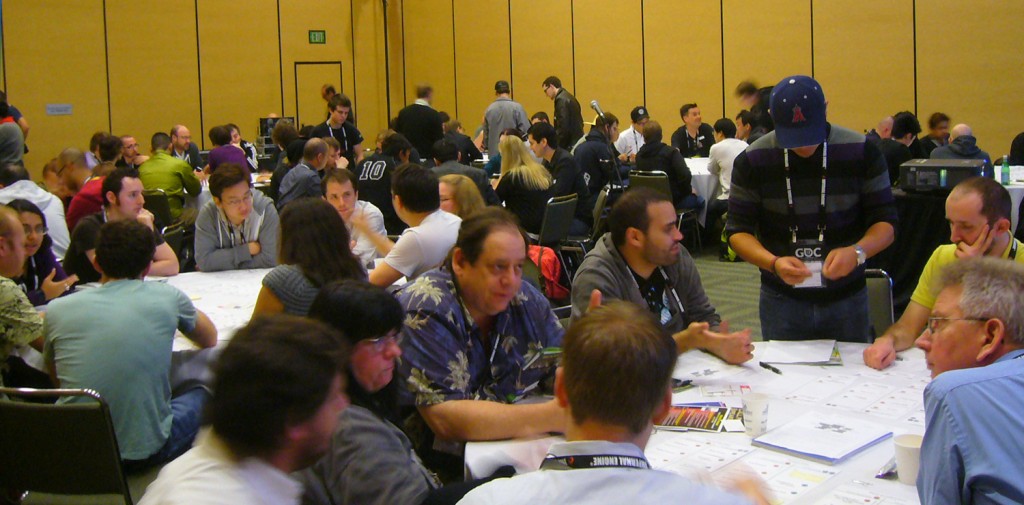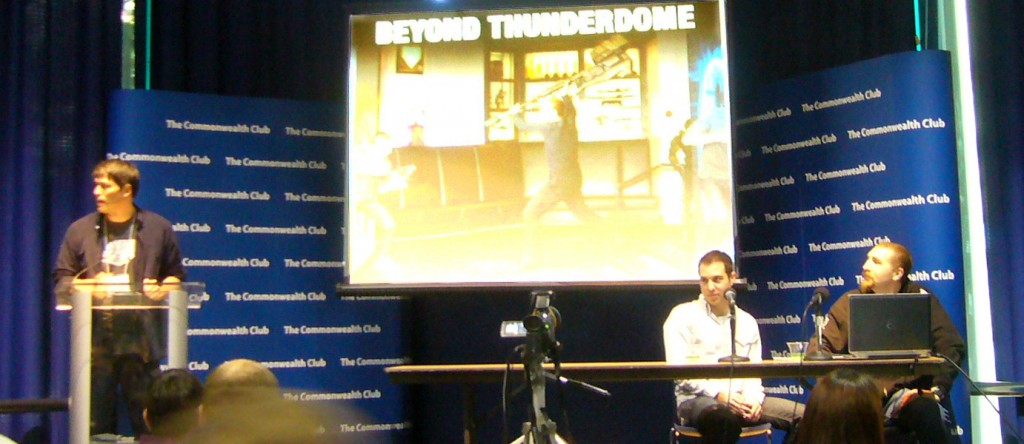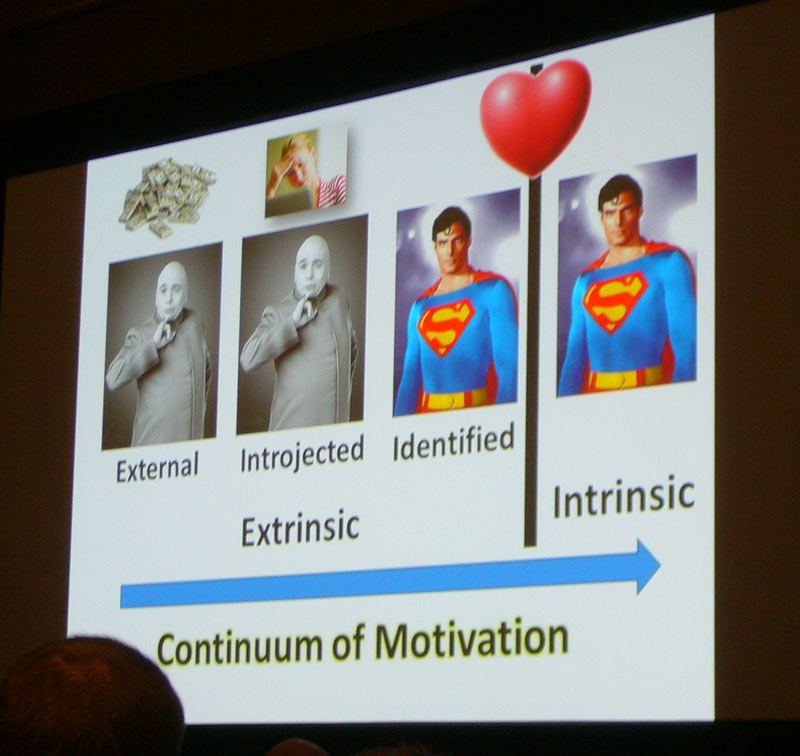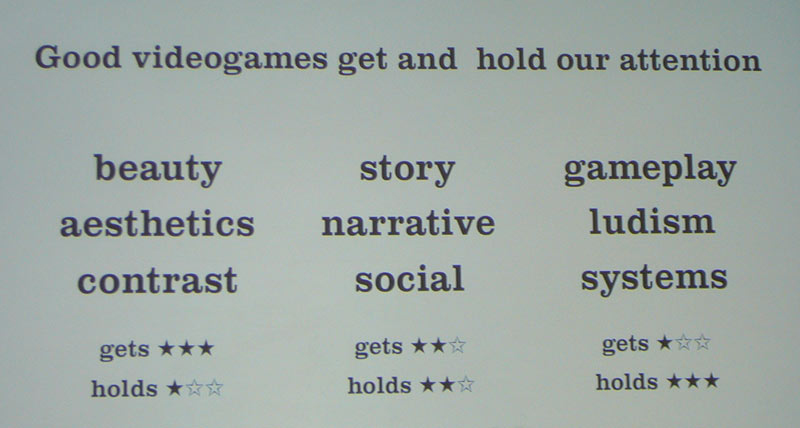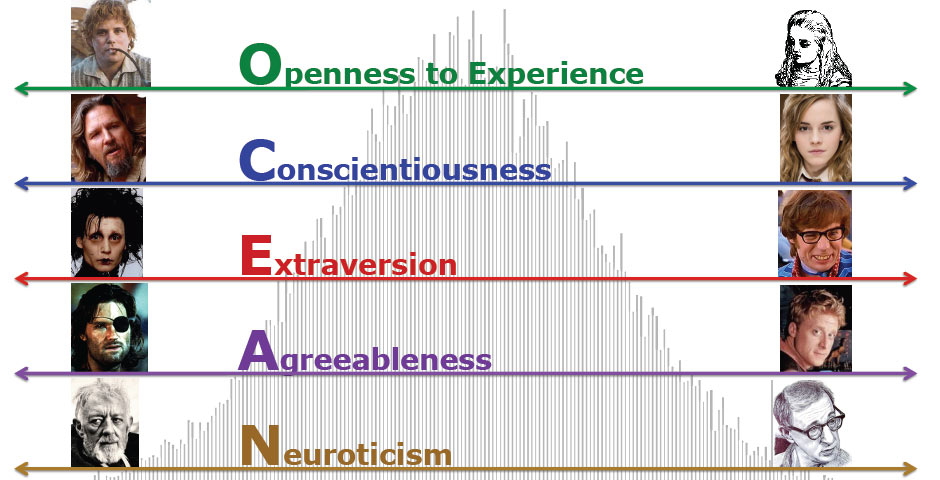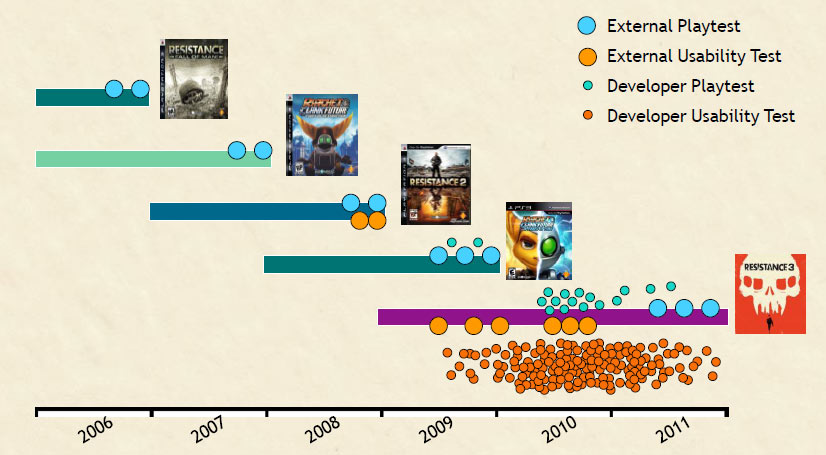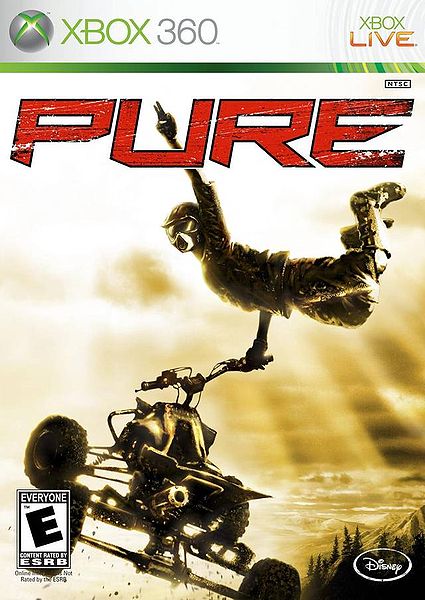GDC 12: Recap
Posted in Conferences - Events on April 24th, 2012 by Veronica Zammitto – 1 CommentAnother great year at GDC. It took me a week to recover from it and more to write about it 🙂 This post is about GDC 12 through my lens which is tinted with Games User Research and I’ll cover the top talks for this field.
There were several interesting highlights throughout the week. I’ll go in chronological order. The Game Developers Conference 2012 took placed on March 5-9 in San Francisco, USA.
Usability Boot Camp by Veronica Zammitto and Paul Newton
We were very pleased with the workshop! We delivered a full-day workshop on games user research (GUR). We divided the activities into 4 main sections: starting with an introduction to usability and games user research plus explaining different methods and how all these are part of the whole development process. Which set the foundations for the rest of the workshop into GUR for pre-production, production, and post-production. We had a balanced between theoretical content on how to employ the different techniques and why, and hands-on exercises were attendees tried out the techniques themselves.
The workshop had a maximum capacity of 100 people and there was pre-registration. The workshop was sold out a couple of weeks before GDC. People kept coming the day of but due to room capacity they couldn’t get a spot. We should deliver another workshop next year, there is a high level of interest and need for know-how on usability and user experience for games.
On Tuesday March 6th, I actually “sneaked out” from GDC to attend the Games User Research Summit on Tuesday. This was a full-day event by the IGDA GUR SIG; there were great presentations with a lot of presence from the industry, including Valve, Bungie, Microsoft Games Studios, Sony, Disney, and Electronic Arts. I truly believe that the level of camaraderie in this discipline is the highest in the whole game industry. I think that a big component of that spirit is the strong academic background where sharing of knowledge is common practice. If you look at the profile from Microsoft Games Studios‘ people, they have MSc, MA, and PhD next to their names, or the like Mike Ambinder from Valve, or like yours truly at EA:)Â Â This had been the 3rd GUR Annual Summit and the community keeps growing. I’ll write a post on this event.
Intrinsic and Extrinsic Player Motivation: Implications for Design and Player Retention by Scott Rigby (Immersyve)
- Rigby pointed out that intrinsic motivation is a stronger predictor of sustained engagement.
- Intrinsic motivation is autotelic, which is self-driven; whereas extrinsic motivation is instrumental, which serves to get something. However, a motivation model has more nuances than a being good or bad, more exactly the model is a continuum:
- This internalization of motivation is what gives strength to engagement.
- Needs: Three basic human needs have been identified across cultures, fulfilling these needs will tap into the deeper layers of motivation.
- Competence relates to mastery, which is how effective you are on your performance. Competence is developed through grow, and this links to game achievements and character development. But bear in mind that this growth has to be meaningful.
- Relatedness taps into our gregarious self. It’s about connecting with others. In games it can be to both other players and NPCs.
- Autonomy is about empowerment through new opportunities that make player wonder what to do next. The choices have to be meaningful to allow satisfaction.
- Satisfying these three basic needs enables the internalization process of motivation.
- External rewards can undermine intrinsic value, unless they support people’s goals.
Attention, Not Immersion: Making Your Games Better with Psychology and Playtesting, the Uncharted way by Richard Lemarchand
- To me, this was the best talk of GDC 2012
- Lemarchand’s message was that immersion and engagement are concepts defined with difficulty, and therefore vague as a framework for discussing video game experience.
- I agree that such concepts posses multiple definitions according to different authors, which stirs muddy waters. For instance, immersion has defined as a factor of presence, the ‘being there’ which is closer to how Lemarchand referred to it during the talk. But also immersion has been identified as Csikszentmihalyi’s flow, closer to an effortless interaction with reduced sense of time and concern for self.
- Lemarchand proposed using the concept of attention instead of immersion. He argued that it is more concrete, it can be measured during playtesting sessions, and therefore more useful to game designers to action on.
- In video games, the trick resides in getting attention first, and then holding attention.
- Attention is also a game component, for instance micromanagement harassment in RTS games to make the opponent loose attention, or presenting information to the player in a way that it tracks attention.
- Maintaining attention requires pacing. Periods of vigilance should be followed by a restoration period. Such restoration can be achieved, for instance, by looking at nature landscapes or switching to another activity.
- Lemarchand pointed out to three aspects of games for grabbing and holding attention:
- Beauty: which refers mostly to aesthetics from an art perspective, such as astonishing images, , but also layout, harmony, and composition. Beauty is great for grabbing attention but weak at holding it.
- Story: narratives have a social aspect that taps our attention. We are touched by recounting shared experiences or witnessing someone’s else fears, such us in games with rich characters. Story does a decent job at both getting and holding attention.
- Gameplay: as through the lens of the MDA framework, which understands games having Mechanics (rules), dynamics (interactions), and aesthetics (emotional responses). In more general terms, what happens with the system during the act of playing. Gameplay falls short at getting attention, but does an outstanding job at holding attention.
- Lemarchand explained how at Naughty Dog they deal with attention. When playing Uncharted players tend to look mainly around the center of the screen, secondarily to the bottom, and lastly to the top of the screen. Their knowledge on players’ visual attention comes from observing participants, however Lemarchand would like to use eye tracking. During playtesting, their participants focus on playing, they don’t talk, telemetry data is recorded. At the end of the session, they fill out surveys or have an exit interview.
The 5 Domains of Play: Applying Psychology’s Big 5 Motivation Domains to Games by Jason VandenBerghe
This great talk covered a topic the same topic that my master thesis: personality traits according to the Big 5 theory and how it informs us about what gamers enjoy playing. My approach was more focused on game mechanics whereas Jason’s is more on ‘domains of play’.
The Big 5 is a widely known personality framework defined by the following 5 traits, each of them is treated as a continuum:
- Openness to new experiences: an imaginative person who embraces new ideas, as opposed to a more conventional person who prefers known situations.
- Consciousness: relates to self-control, ranging from being well-organized and strong will to difficulty achieving goals.
- Extraversion: social style, an extroverted person enjoys large groups, being talkative. A more introverted person is not unfriendly but reserved and independent.
- Agreeableness: an altruist trail, ranging from empathy and being helpful to a more suspicious and competitive angle.
- Neuroticism: emotional stability, a person with higher neuroticism is prone to experience negative states, such as fear, stress, guilt, anger.
Now that you have a sense of them, check out the VandenBerghe’s slide which powerfully summaries each trait with a character (btw, I strongly believe this slide should be included in psychology books from now on):
VandenBerghe elaborated 5 domains of play which mapped onto the personality traits:
- Novelty (related to Openness): such as Madden NFL on the one hand, and Minecraft on the other.
- Challenge (related to Consciousness): for instance, Lego Star Wars versus Splinter Cell.
- Stimulation (related to Extraversion): like Flower against Just Dance.
- Harmony (related to Agreeableness): from Street Fighter to Little Big Planet.
- Threat (related to Neuroticism): starting inPeggle and finishing on Call of Duty.
As you noticed, each game taps on particular personality traits. The lesson is that depending on who or how many people you want to satisfy with your game you will have to enable gameplay components that taps on those traits.
VandenBerghe and colleagues continue researching to better understand how personality profiles shape what games we prefer to play. They employ a qualitative approach by conducting interviews.
What You Don’t Know IS Hurting You: How Aggressive User-Research Improved Resistance 3 by Drew Murray
Murray did an awesome job presenting a case study on Resistance 3 which covers how Insomniac Games is dealing on the Games User Research field.
It started by identifying 4 key questions when you’re going to do GUR:
- Who are you testing? (differentiate between internal and external testing)
- What aspect of the experience are you measuring? (Affect, behavior, or cognition)
- What type of data are you dealing with? (quantitative or qualitative)
- How are you collecting the data? (observation, metrics, self-report)
Murray also made a distinction between usability and playtesting sessions. Where the former were done to collect behavioral and cognitive data, and the latter to collect behavioral and affective data.
One of the dev team’s goals during for usability sessions of Resistance 3 was improving the shooting controls. They collected quantitative data on impact location of the shooting target, then visualized it to steer adjustments.
Lot of data from playtesting sessions was analyzed as metrics. For example, to review how popular the different weapons were or how difficult the missions were. Comparing results of sessions through time also provided with great insight about how successful (or not) the fine-tuning efforts were coming.
Murray underlined the invaluable information coming from usability and playtesting sessions and therefore how GUR activities have been done more often at Insomniac. One of his pieces of advice was to automate as much as possible the collection and analysis of data, but without forgetting to double-check results manually.
Finally, I really enjoyed his visualization on the progression of GUR work at his studio:
